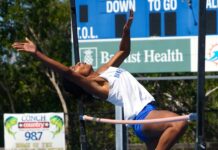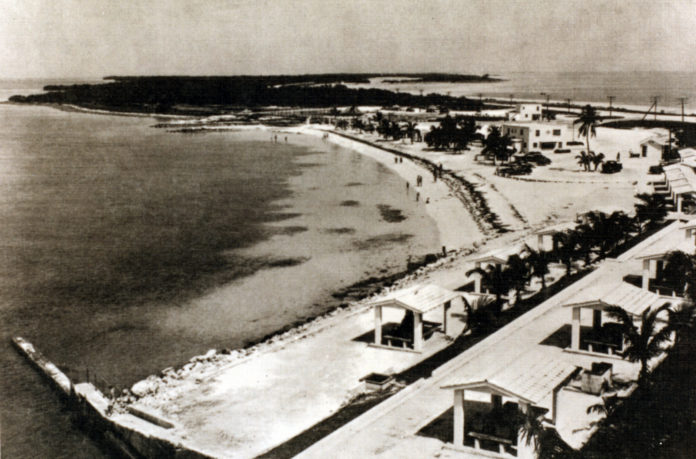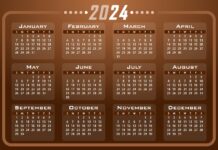The first surveyor general for British East Florida, William Gerard de Brahn, named the island Rice Island on his 1772 chart. The island’s Spanish name, Bahia Honda, makes more sense because, in English, bahia honda translates to “deep bay.” At 30 feet, Bahia Honda has one of the deepest natural harbors in the island chain.
George Gauld, a Scottish-born surveyor sent to chart the Florida coast, noted: “Bahia Honda, like Cayo Hueso is much frequented by the Turtlers and Wreckers from Providence and by the Spanish vessels from Havana, of which there are about 10 annually employed in fishing among the Kays on the coast of Florida, where there is sufficient quantity of fish to supply the West Indies.” Gauld also mentioned a good source of freshwater on the island.
If two qualities were infrequently shared by the islands making up the Florida Keys archipelago, they would be a freshwater source and a deep, naturally occurring harbor. That combination was attractive to those early sailors making their living up and down the Florida Reef. When John Lee Williams was touring the area for his book, “The Territory of Florida, Or, Sketches of the Topography, Civil and Natural History,” he noted that in the 1820s and 1830s, there was “a small, but pleasant settlement on the east side of the harbor, with a well of good water.”
Bahia Honda is still known for its deep bay and sailor-friendly harbor. The island’s freshwater well is said to have been compromised by the 1846 Great Havana Hurricane that destroyed the Sand Key Lighthouse some 41 miles away. The well has long since disappeared. Bahia Honda continued to serve as a favorable anchorage for sailors fishing, turtling and wrecking along the reef.
The 20th century brought significant changes to the Florida Keys when a select group of the islands was joined by the Key West Extension of Henry Flagler’s East Coast Railway. Bahia Honda’s iconic bridge was one of the most difficult of all the Key West Extension railroad bridges to build. The primary reason the construction project was so hard was its bahia honda. Because of its deep nature, the current that passes underneath the bridge could become quite dangerous. Railroad work days on the bridge were restricted to two 45-minute shifts during slack tide, the short time between the high and low tides when the water becomes still and creates safer conditions.
It was January 22, 1912, when the Key West Extension officially opened, and the railroad delivered Henry Flagler, an octogenarian at the time, from the mainland to Key West. During the run of the railroad, when the train would pass through the camel-trestle Bahia Honda Bridge, passengers were told to keep their hands and heads inside the train as it rambled and roared 25 feet above the turquoise waters.
Sept. 2, 1935, the day that delivered that awful Category 5 hurricane, marked the end of the Over-Sea Railroad. When the new and improved second version of the Overseas Highway opened to traffic on March 29, 1938, the iconic Bahia Honda Bridge was incorporated into the highway system. Instead of passing through the camel trestle bridge as the train had, the road traveled over the top of the bridge, 65 feet above the fast-moving turquoise waters of bahia honda.
The Overseas Road and Toll Bridge District that oversaw the operation of the Overseas Highway also maintained part of Bahia Honda as a public park. People could stop to picnic at one of the covered tables, enjoy one of the Florida Keys’ premier beaches, and swim in the warm, clear waters. By 1950, the park had a gas station where the marina stands today and a concession stand with cold drinks and hot dogs for sale.
There was also another side to the island. The county had instructed the residents of Marathon to use the northern end of the island as a dump. By September 1961, Bahia Honda had been turned over to the Florida Board of Parks and Historic Memorials, and Alva Cook was appointed the park’s first superintendent. It was not until 1963 that Monroe County officials decided that Bahia Honda could no longer live a dual existence and decried the dumping of trash on the island as unlawful. It can be assumed that for some residents, old habits had died hard.
These days, Bahia Honda State Park is one of the most picturesque of a long list of amazing parks in the Florida Keys. It is also home to the award-winning Sandspur Beach.
Twice, Sandspur Beach was singled out as the best beach in America. Both times it happened, it was 1992. Condé Nast Traveler magazine declared it the country’s best beach, as did Dr. Beach himself, Stephen Leatherman.
While the Florida Keys are not known for their naturally occurring sandy beaches, Bahia Honda’s Sandspur Beach proves to be a glorious exception to the rule. When driving across the Overseas Highway and rolling over the modern Bahia Honda Bridge – it opened to traffic in 1972 – and seeing the crescent beach, its bahia honda, and the iconic bridge, it is hard not to look. That beach is only one of the three beaches offered by the park and not the award winner. If you have not yet visited the park, do yourself a favor, pack a picnic lunch and spend a little time there. The experience will not disappoint.






















